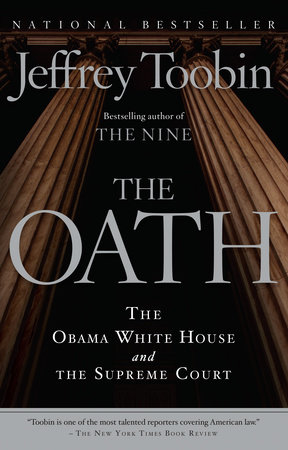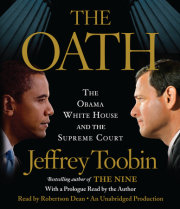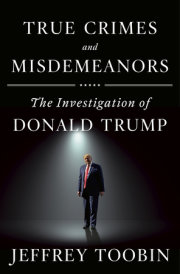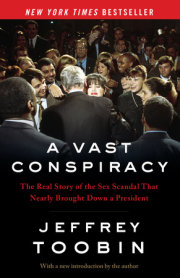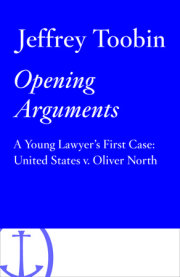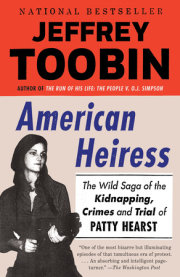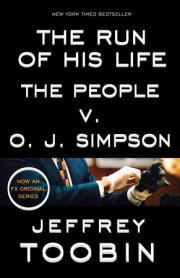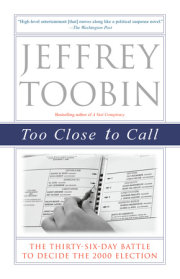Excerpted from the Hardcover Edition
1. The Politician’s PathOn February 14, 2008, a man named Steven Kazmierczak opened fire on the campus of Northern Illinois University, in DeKalb, Illinois. He killed five people, and injured twenty-one, before committing suicide. The following day, Barack Obama, the junior senator from the state and a candidate for president, was asked about the shooting at a news conference. In light of this tragedy, what did Obama think about the need for gun control, especially as it related to the Second Amendment?
The Second Amendment states: “A well regulated Militia, being necessary to the security of a free State, the right of the people to keep and bear Arms, shall not be infringed.” There was and remains unanimous agreement that the text of the amendment is ungrammatical. For more than a century, there was also agreement on what the Second Amendment meant. According to this understanding, the Second Amendment related only to the rights of citizen militias and imposed no barrier to gun control; in other words, the amendment did not give private individuals a right to bear arms.
Obama had a different view.
“I believe that the Second Amendment means something. I do think it speaks to an individual right,” Obama said at his news conference following the massacre. “There’s been a long-standing argument among constitutional scholars about whether the Second Amendment referred simply to militias or whether it spoke to an individual right to possess arms. I think the latter is the better argument,” he went on. “There is an individual right to bear arms, but it is subject to common-sense regulation just like most of our rights are subject to common-sense regulation. And so I think there’s a lot of room before you start bumping up against a constitutional barrier.”
Even a few years earlier, Obama’s comments would have seemed bizarre. Since a Supreme Court case called United States v. Miller, in 1939, hundreds of courts had rejected the individual rights view of the Second Amendment. But then the National Rifle Association, the Republican Party, and their allies invested their time, money, and energy in creating a new understanding of the Second Amendment. Indeed, at the time of Obama’s news conference about the massacre, the Supreme Court was preparing to decide District of Columbia v. Heller, a product of this long effort to create a new interpretation of the Second Amendment. The work of conservatives to change the accepted meaning of the framers’ words was so successful that the recruits to the cause came to include the Chicago liberal who was a leading contender to be the Democratic nominee for president.
This, it turns out, was no surprise. Obama was an unusually well-credentialed lawyer. His life as a public figure began in 1990, when he was twenty-eight and won election as president of the Harvard Law Review, the first African American to hold that position. Obama practiced law for a dozen years and taught at the University of Chicago Law School for nearly as long. But by the time he ran for president, Obama was above all a politician, and a cautious one. Obama admired the heroes of the civil rights movement, including the lawyers, but he did not model his career on theirs. Obama did not believe the courts were the principal vehicle for social and political change. Elections, rather than lawsuits, were his battlefield of choice, and by 2008 he knew that the way to win the presidency was, in part, to embrace the individual rights theory of the Second Amendment.
Near the end of his memoir, Dreams from My Father, which he published when he was thirty-three, Obama reflected on his education at Harvard Law School. His tone was ambivalent. “The study of law can be disappointing at times, a matter of applying narrow rules and arcane procedure to an uncooperative reality; a sort of glorified accounting that serves to regulate the affairs of those who have power—and that all too often seeks to explain, to those who do not, the ultimate wisdom and justness of their condition.” Then, in a gesture that was common in the book, and in Obama’s character, he gave the other side of the story: “But that is not all the law is,” he continued. “The law is also memory; the law also records a long-running conversation, a nation arguing with its conscience.”
Obama’s conversation with himself continued: “How far do our obligations reach? How do we transform mere power into justice, mere sentiment into love? The answers I find in law books don’t always satisfy me—for every Brown v. Board of Education I find a score of cases where conscience is sacrificed to expedience or greed.” As before, though, Obama followed that despairing remark with a hopeful one: “And yet, in the conversation itself, in the joining of voices, I find myself modestly encouraged, believing that so long as the questions are still being asked, what binds us together might somehow, ultimately, prevail.”
Obama arrived at Harvard after spending three years as a community organizer in Chicago. There he had led a small group in a series of fights, usually with the city government, for better housing, for asbestos abatement, and for jobs on the South Side. Like many such endeavors to organize the poor, Obama’s work was difficult and not especially successful; friends and colleagues found Obama more analytical than confrontational. In time, as his frustrations mounted, Obama began thinking about going to law school. Partly, Obama simply wanted to find a way to make a decent living, but the profession also seemed well suited to his particular kind of intelligence and ambitions. He was admitted to Harvard and began his studies in the fall of 1988.
Obama had just turned twenty-seven, which turned out to be a fact of some significance. Most of his fellow students were considerably younger, and Obama’s maturity, both chronological and temperamental, set him apart. He approached law school, as he did much else, with a certain detachment, as both participant and observer. Law school, and Harvard in particular, would leave its mark on Obama, but his core remained unchanged.
There was much truth in the conventional view of a Harvard Law School degree as a passport to Wall Street law firms, but the school also produced eminent role models for an aspiring reformer like Obama. Louis Brandeis, class of 1877, practically invented Supreme Court litigation as a vehicle for social change and, in an article in the Harvard Law Review, first identified a “right to privacy.” Felix Frankfurter, class of 1906, provided much of the intellectual energy behind the New Deal, as well as many protégés to Franklin Roosevelt, before following Brandeis on to the Supreme Court. Archibald Cox, class of 1937, joined the faculty and went on to serve as President Kennedy’s solicitor general and then Watergate special prosecutor. In subsequent decades, untold numbers of Harvard Law graduates moved to Washington, and around the country, to make their marks on the policies of the day.
And there was a time, too, when ideas, as well as people, also made the trip from the Ivy League to Washington. In the Warren Court years—the years of Brown—leading law schools provided much of the intellectual firepower behind the Court’s most liberal decisions. In Goldberg v. Kelly, in 1970, the Court held for the first time that the government must give an individual a hearing before cutting off his welfare benefits. To do otherwise, Justice William J. Brennan Jr. said, would violate the Fourteenth Amendment, by depriving the individual of “property” without due process of law. But were welfare benefits “property”? In the key passage in the opinion, Brennan wrote, “It may be realistic today to regard welfare entitlements as more like ‘property’ than a ‘gratuity.’ Much of the existing wealth in this country takes the form of rights that do not fall within traditional common-law concepts of property.” In support of this novel notion, Brennan cited the work of Charles A. Reich, a professor at Yale Law School, and his articles in the Yale Law Journal. At around the same time, Frank I. Michelman, a professor at Harvard (who was still teaching when Obama was a student), suggested that the Fourteenth Amendment might require a right to economic equality, not just freedom from discrimination. The Supreme Court never went that far, but the idea was, at least for a while, plausible. To write for a law review in those days could be seen as an act of genuine political importance. Harvard’s influence, though, went in cycles, and there was a down period as the country and the Supreme Court began to turn to the right in the 1970s—a period that coincided with the tenure of John G. Roberts ’79 on campus. Richard Nixon famously referred to Harvard as the “Kremlin on the Charles,” so faculty members were generally less welcomed in his administration. Conservative Supreme Court justices needed no direction from liberal academics. On the whole, in these days, the Harvard law faculty still tilted left, but the school returned its focus to its mission as a professional school. As managing editor of the Harvard Law Review, Roberts was known by his colleagues as a political conservative—a modest novelty among his fellow editors—but mostly as a skilled and demanding taskmaster.
Liberals may still have held sway in Cambridge, but conservatives were gaining in the rest of the world, and following his graduation, magna cum laude, Roberts began his Republican ascent. He clerked first in New York for Henry J. Friendly, a legendary judge of moderate Republican views on the Second Circuit, and then in 1980 for William Rehnquist, who was still an associate justice. From there, Roberts went to the Justice Department and Reagan White House. Clearly, then, the Kremlin in Cambridge could launch a brilliant conservative career as well as a liberal one.
Back at the law school, in the eighties, the politics took a peculiar turn. The faculty, and to a lesser extent the student body, became bitterly divided over a movement known as Critical Legal Studies. CLS was a hybrid of traditional Marxism and contemporary literary theory; its adherents purported to expose the contradictions and class biases inherent in all aspects of law. As far back as the 1920s, “legal realism”—which provided the intellectual basis for much of the New Deal—exposed the political nature of most legal rules. But the Crits, as they were known, practiced a kind of legal realism on steroids, taking an almost nihilistic pleasure in showing the meaninglessness of law. They portrayed law as first and foremost an instrument of oppression of the disenfranchised, and they did so in a manner that was both passionate and obscure, with articles full of citations to the work of “poststructuralists” like Jacques Derrida. Crits and conservatives on the faculty battled over tenure appointments, and the fights sometimes spilled into the classrooms, and even into courtrooms. The Kremlin on the Charles became known as Beirut on the Charles.
Roberts experienced a pre-CLS Harvard. Obama arrived just after its heyday. So it was notable that, while still in his first year, Obama sought out Laurence Tribe and went to work for him as a research assistant. The choice was a revealing one on the young student’s part. Tribe was a liberal but no Crit—a description that also fit his prize student. Tribe had managed to avoid the Crits-versus-conservatives warfare on the faculty, largely because he was a leading modern exemplar of the Cambridge-to-Washington axis. After writing the best single-volume treatise on the Constitution, Tribe became an accomplished Supreme Court advocate and adviser to Democratic politicians. In 1987, Tribe gave damning testimony before the Senate Judiciary Committee against Reagan’s nomination of Robert Bork to the Supreme Court. The stand made Tribe a Republican target and doomed his own chance of winning a nomination to the Court. Still, Tribe was more than an academic; he was a player on the larger stage, the real world.
Obama excelled in the classroom—he too would graduate magna cum laude—and he succeeded in the writing competition to join the staff of the Harvard Law Review. Students on law reviews edit articles that are submitted by law professors around the country; about forty out of five hundred students in a class make law review at Harvard. Every February, the staff of the law review holds an election to select the president, or editor in chief, of the magazine for the following year. Obama won with broad support. Conservative students, who were a growing presence at Harvard, turned out to be the key to Obama’s victory. The Federalist Society—the national conservative legal organization—had been founded at Yale in 1982, but Harvard soon opened a chapter, and its members asserted themselves as a vocal minority on the staff of the Review. The conservatives recognized that Obama was not one of their own, but they felt he would give them a fair shake, especially about which articles to publish. In winning the confidence of conservatives, Obama’s maturity proved a tremendous asset. In that tumultuous time on campus, Obama always seems slightly removed from the battle lines, in his customary posture of both observer and participant. He had an innate grasp of the politician’s gift for persuading others that you agree with them without ever making an explicit commitment. Obama’s earnest style earned him some mockery from his friends. One of them told David Remnick that a group would go to the movies and tease Obama by imitating his solicitude: “Do you want salt on your popcorn? Do you even want popcorn?”
Suddenly, then, with his election as president of the Review, Barack Obama was a celebrity of sorts. The New York Times did a story about him. Turner Broadcasting asked Obama to record a “Black History Minute,” and the young man, struggling with the teleprompter, gave a brief tribute to Charles Hamilton Houston, one of Thurgood Marshall’s legal mentors. Vanity Fair, which does not generally track the leadership of scholarly publications, devoted a full page to Obama’s election. “The New York Times ran a ‘First Black’ headline, which probably won’t be the last time that label is affixed to Barack Obama,” Elise O’Shaughnessy wrote, before concluding that Obama “responds warily to the assumption that he himself will run for office. ‘If I go into politics it should grow out of work I’ve done on the local level, not because I’m some media creation.’ Though, as media creations go, he’d be a pretty good one.” In addition, around this time, Jane Dystel, a literary agent in New York, approached Obama with the idea of his writing a book. Obama agreed, and signed a contract with a division of Simon & Schuster. (At that point, people embraced Obama without knowing much about him. One publisher thought he was raised in the Chicago ghetto; Vanity Fair said he grew up in Singapore, not Indonesia. No one seemed to know that his real home was Honolulu.)
It was all a rather extraordinary amount of attention to a mere law student, but during his debut as a public figure, Obama demonstrated precocious political skills. “The fact that I’ve been elected shows a lot of progress,” he told Fox Butterfield, of the Times. “But it’s important that stories like mine aren’t used to say that everything is O.K. for blacks.” Likewise, Obama was always careful to show respect for his forebearers in the civil rights movement, whose sacrifices, he said, made his own success possible. He told the Boston Globe, “To some extent, I’m a symbolic stand-in for a lot of the changes that have been made.”
But for all that Obama showed respect for Marshall, Houston, and their peers, he also made clear in his own way what he expected of the contemporary legal system: not much. Those pioneers had used the courts to break down the legal barriers that oppressed African Americans. But by the time Obama was at Harvard, that work was mostly done. The task of legal progressives of Obama’s vintage was to try to hang on to the gains that had been made in the courts—and that wasn’t easy, or of particular interest to him. In 1991, Obama graduated from Harvard Law School into the world of the Rehnquist Court, where the social change on the agenda was (almost always) in the conservative direction. If the right was ascendant, the left was distracted—with the baroque inventions of Critical Legal Studies. For someone like Obama, who had spent years working on the real-world problems of poor people in Chicago, theories untethered to reality had no appeal.
Later, when Obama was a senator, he explained the nature of his disillusionment with the use of the courts for social change. It wasn’t just that things looked bleak at the Rehnquist Court. “I wondered if, in our reliance on the courts to vindicate not only our rights but also our values, progressives had lost too much faith in democracy,” he wrote in The Audacity of Hope. Yes, he pointed out that he believed in the right to privacy and celebrated the legacy of Brown in civil rights, but it wasn’t up to lawyers to preserve those rights. “There was one way to ensure that judges on the bench reflected our values, and that was to win at the polls.” Unlike his honored forebearers, Obama would devote his life to elections, not lawsuits.
Copyright © 2013 by Jeffrey Toobin. All rights reserved. No part of this excerpt may be reproduced or reprinted without permission in writing from the publisher.

